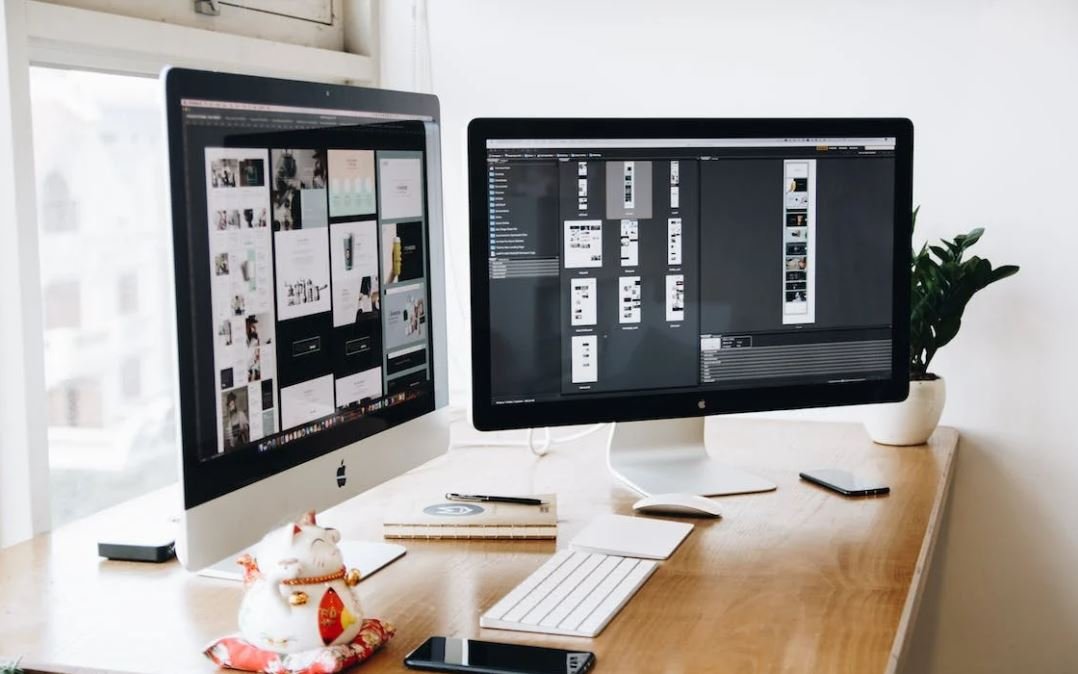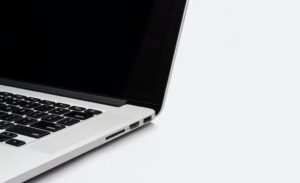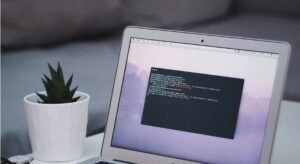Production Possibilities Curve Example
The production possibilities curve (PPC) is a graphical representation of the different combinations of two goods that can be produced in an economy, given its limited resources and technology. It shows the maximum amount of one good that can be produced for each possible level of production of the other good.
Key Takeaways
- The production possibilities curve illustrates the trade-offs an economy faces when producing two goods.
- The PPC is concave because of the principle of increasing opportunity cost.
- The slope of the PPC represents the opportunity cost of producing one good in terms of the other.
**The PPC is an essential tool in economics to analyze the efficiency and trade-offs in production choices.** It helps economists and policymakers understand the constraints an economy faces and make informed decisions about allocation of resources.
**One interesting feature of the PPC is its concave shape, which reflects the concept of increasing opportunity cost.** As an economy moves resources from producing one good to the other, the resources that are best suited for the first good are used first, resulting in a relatively small decrease in production of the first good. However, as more resources are shifted, the resources that are less efficient in producing the second good are utilized, leading to a larger decrease in the production of the first good.
Let’s consider an example to illustrate the concept of a PPC. Assume an economy can produce only two goods, smartphones and bicycles. The table below shows four production possibilities for the economy, given its available resources and technology.
| Production Combination | Smartphones Produced | Bicycles Produced |
|---|---|---|
| Combination A | 10 | 0 |
| Combination B | 8 | 2 |
| Combination C | 6 | 4 |
| Combination D | 4 | 6 |
**The PPC can be plotted using the data from the table.** The graph demonstrates the combinations of smartphones and bicycles that can be produced using the available resources and technology. As shown in the graph, as more smartphones are produced, the economy has to sacrifice the production of bicycles, and vice versa.
Another interesting observation of the PPC is the opportunity cost of producing one good in terms of the other. The slope of the PPC represents the rate at which one good must be given up to produce more of the other good. Let’s take a look at two points on the PPC:
- Point A: Producing 8 smartphones and 2 bicycles
- Point B: Producing 4 smartphones and 6 bicycles
| Production Point | Smartphones Produced | Bicycles Produced |
|---|---|---|
| Point A | 8 | 2 |
| Point B | 4 | 6 |
**The opportunity cost of producing 1 additional smartphone at Point A is 2 bicycles**, while at Point B, **the opportunity cost of producing 1 additional bicycle is 0.5 smartphones**. As shown, the opportunity cost of producing one good increases as more of that good is produced, indicating the increasing trade-offs faced by the economy.
The PPC is a powerful tool that can help us understand the choices and limitations of an economy in allocating its resources. By analyzing the PPC, economists and policymakers can make informed decisions to achieve the most efficient allocation of resources and maximize the overall welfare of a nation.
Therefore, understanding the production possibilities curve and its implications is essential for anyone interested in economics and the study of resource allocation.

Common Misconceptions
Misconception 1: Production possibilities curve (PPC) represents actual production levels
One common misconception about the production possibilities curve is that it represents actual production levels of a country or an economy. However, this is not the case. The PPC is a graphical representation of the different combinations of two goods that can be produced given available resources and technology. It illustrates the maximum potential output, but it does not necessarily reflect the actual output.
- The PPC is a theoretical tool used to understand trade-offs and resource allocation.
- Actual production levels may fall below or exceed the possibilities presented by the curve.
- The PPC can shift outward or inward due to changes in factors like technology, resources, or efficiency.
Misconception 2: The PPC assumes constant opportunity costs
Another misconception is that the production possibilities curve assumes constant opportunity costs. In reality, opportunity costs can change as more of one good is produced at the expense of another. This means that the shape of the PPC may not always be linear but can exhibit increasing or decreasing opportunity costs.
- Opportunity cost refers to the value of the next best alternative that must be given up to produce more of a particular good.
- Increasing opportunity costs occur when the production of one good requires increasingly larger sacrifices of the other.
- Decreasing opportunity costs occur when producing more of one good results in smaller sacrifices of the other.
Misconception 3: The PPC assumes full efficiency and resource utilization
Many people mistakenly believe that the production possibilities curve assumes full efficiency and resource utilization. However, this is not always the case. The PPC assumes that resources are used efficiently, but it does not rule out the possibility of inefficiencies or unused resources.
- Efficiency means producing the maximum output possible with given resources and technology.
- An economy can operate inside the PPC if there are unused resources or inefficiencies in resource allocation.
- An economy can operate outside the PPC if it achieves greater efficiency or receives additional resources.
Misconception 4: The PPC is static and unchangeable
It is incorrect to assume that the production possibilities curve is static and unchangeable. The PPC can shift in response to changes in various factors, such as technology, resources, or efficiency. These shifts represent changes in the maximum potential output and signify economic growth or contraction.
- Technological advancements can increase the productive capacity of an economy, shifting the PPC outward.
- A decrease in available resources or a decline in technology can shift the PPC inward.
- The PPC can be influenced by changes in trade, education, or investment in capital goods.
Misconception 5: The PPC represents a fixed set of choices
Lastly, it is a misconception that the production possibilities curve represents a fixed set of choices. The PPC only shows the combinations of two goods that can be produced with existing resources and technology, but it does not limit the choices that an economy can make. Society can choose any combination along or inside the PPC based on its preferences and priorities.
- The PPC does not imply which combination is the most preferred or desirable.
- Choices outside the PPC may be unattainable with existing resources and technology.
- Economic growth can expand the range of choices available, allowing for a higher standard of living.

Introduction
When it comes to understanding economic concepts, the Production Possibilities Curve (PPC) plays a crucial role. The PPC demonstrates the different combinations of goods or services that a society can produce given its limited resources and technology. In this article, we will explore ten real-life examples that showcase the possibilities and trade-offs inherent in production.
1. Cars vs. Computers
Imagine a hypothetical economy that can produce either cars or computers. This table illustrates the maximum combination of cars and computers that can be produced using available resources and technology:
| Cars (in thousands) | Computers (in thousands) |
|———————|————————-|
| 0 | 10 |
| 1 | 9 |
| 2 | 7 |
| 3 | 4 |
| 4 | 0 |
2. Wheat vs. Steel
Let us now consider a different scenario where an economy focuses on the production of wheat and steel. The following table presents the trade-offs between these two goods:
| Wheat (in tons) | Steel (in tons) |
|—————–|—————–|
| 0 | 20 |
| 1 | 18 |
| 2 | 14 |
| 3 | 8 |
| 4 | 0 |
3. Education vs. Healthcare
In this example, we examine the production trade-offs between investing resources in education and healthcare:
| Education (in millions) | Healthcare (in millions) |
|————————-|————————-|
| 0 | 50 |
| 1 | 45 |
| 2 | 35 |
| 3 | 20 |
| 4 | 0 |
4. Leisure vs. Work
Consider a context where individuals must choose between leisure time and working hours. The table below represents the trade-offs involved:
| Leisure (in hours) | Work (in hours) |
|——————–|—————–|
| 0 | 40 |
| 1 | 38 |
| 2 | 34 |
| 3 | 28 |
| 4 | 20 |
5. Energy Sources
Exploring the potential combinations of renewable and non-renewable energy sources, this table depicts the trade-offs required in their production:
| Renewable Energy (in megawatts) | Non-renewable Energy (in megawatts) |
|———————————|————————————-|
| 0 | 100 |
| 1 | 90 |
| 2 | 70 |
| 3 | 40 |
| 4 | 0 |
6. Agriculture vs. Manufacturing
This table shows the trade-offs between dedicating resources to agriculture or manufacturing:
| Agriculture (in tons) | Manufacturing (in units) |
|———————–|————————–|
| 0 | 100 |
| 1 | 90 |
| 2 | 70 |
| 3 | 40 |
| 4 | 0 |
7. Research vs. Production
Imagine a scenario where a company needs to decide between allocating resources to research activities or production processes. This table highlights the possible trade-offs:
| Research (in dollars) | Production (in dollars) |
|———————–|————————-|
| 0 | 100 |
| 1 | 95 |
| 2 | 85 |
| 3 | 70 |
| 4 | 40 |
8. Health vs. Defense
Exploring the allocation of resources between healthcare and defense sectors, the following table illustrates the potential trade-offs:
| Health (in billions) | Defense (in billions) |
|———————-|———————-|
| 0 | 200 |
| 1 | 190 |
| 2 | 170 |
| 3 | 140 |
| 4 | 100 |
9. Environment vs. Industry
Considering the options available to balance environmental protection and industrial growth, this table presents the possible combinations:
| Environment (in units) | Industry (in units) |
|————————|———————|
| 0 | 100 |
| 1 | 90 |
| 2 | 70 |
| 3 | 40 |
| 4 | 0 |
10. Infrastructure vs. Education
Lastly, let us explore the trade-offs involved in deciding between investing in infrastructure projects or educational initiatives:
| Infrastructure (in millions) | Education (in millions) |
|—————————–|————————|
| 0 | 50 |
| 1 | 45 |
| 2 | 35 |
| 3 | 20 |
| 4 | 0 |
Conclusion
The Production Possibilities Curve demonstrates how an economy’s resources and technology impose limits on its production capabilities. By analyzing various scenarios and the trade-offs they entail, we can gain a deeper understanding of resource allocation and the consequences of decisions. The tables presented in this article serve as concrete examples to illustrate the principles of the Production Possibilities Curve, revealing the inherent choices societies face when deciding how to allocate their limited resources.
Frequently Asked Questions
What is a Production Possibilities Curve (PPC)?
A Production Possibilities Curve (PPC) is a graphical representation that shows the maximum amount of goods or services that can be produced within a given set of resources and technology.
How is a PPC constructed?
PPC is constructed by plotting various combinations of two goods or services on a graph, where the y-axis represents the quantity of one good or service, and the x-axis represents the quantity of the other good or service.
What does a point inside the PPC represent?
A point inside the PPC represents an inefficient allocation of resources, where there is unused productive capacity or underutilization of resources.
What does a point outside the PPC represent?
A point outside the PPC represents an unattainable combination of goods or services given the current resources and technology.
What causes the PPC to shift inward?
The PPC shifts inward when there is a decrease in resources, such as a natural disaster that destroys productive assets, or a decline in technology that reduces productivity.
What causes the PPC to shift outward?
The PPC shifts outward when there is an increase in resources, such as advancements in technology that improve productivity, or an increase in the labor force.
What is the opportunity cost on the PPC?
The opportunity cost on the PPC refers to the trade-off between producing one good or service over another. It represents the maximum quantity of one good or service that must be given up to produce an additional unit of the other good or service.
What does a straight-line PPC indicate?
A straight-line PPC indicates a constant opportunity cost between the two goods or services being produced. This means that resources are equally efficient in producing either good or service.
What does a bowed-outward PPC indicate?
A bowed-outward PPC indicates an increasing opportunity cost between the two goods or services being produced. This means that resources are not equally efficient in producing both goods or services.
How does specialization affect the PPC?
Specialization can increase the potential output represented by the PPC by allowing resources to be used more efficiently. By focusing on producing goods or services in which they have a comparative advantage, producers can achieve a higher level of output within the given resources.




